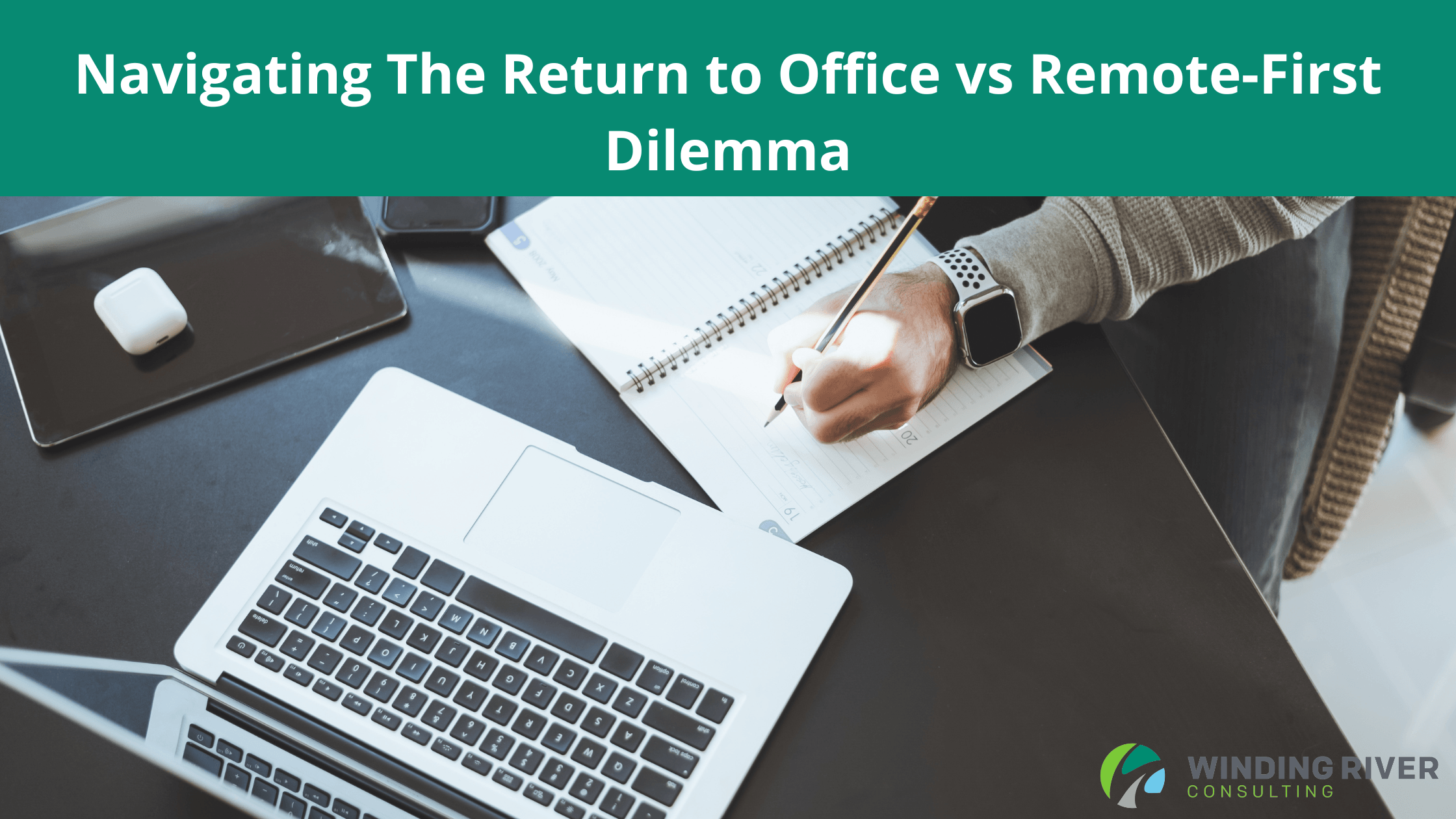4 min read
Navigating The Return to Office vs Remote-First Dilemma
Allan Fisher is the President and Founder of Premier Financial Search, an executive recruitment firm that specializes in placing accounting and...

Gary founded Winding River in 2016 after growing SS&G to the 37th largest firm in the U.S. Now, Gary is working hard to help firms stay viable and win in today's climate.
Table of Contents

This is a question on many of our minds. As we face the reality of long-term remote and hybrid work arrangements, the facts are clear:
Accounting firms will need to find practical ways to connect with and train both on-site and off-site employees.
This includes employees at all levels of an organization, and at every stage of their career.
First, regardless of context, training must be spearheaded by the learning and development team, with the support of the managing partner and firm leadership. If there is disorganization or misalignment, training of any kind will be less effective. Here are the big ideas that directly relate to how your firm sets up training initiatives:
It’s important that every decision-maker has buy-in, and every doer has the steps and resources they need to succeed.
Continuing education (CE) is a big part of this conversation. CE requirements in our industry are very specific, and there is little to no leeway. Your team should be aware of what boxes must be checked, and the leadership and development team should own the process. Partners should maintain accountability, ensuring that the leadership and development team is providing the right CE, according to industry standards and guidelines.
In addition to fulfilling objective requirements, it’s important that your firm is providing a high caliber of content. This is something that may be worked on in conjunction with state CPA societies, to create apropos courses or source instructors. The AICPA may be a good place to point your leadership and development team toward, as that community and database has a lot of qualified talent.
So, all of those reminders and recommendations are important, but let’s talk digital. Training a remote or hybrid work force requires a reinvention.
Historically, the best way to train was to get your people in a room together, bring in a speaker, and teach face to face. Doing it that way, you can monitor and control and provide an easy pathway for senior accountants and leaders to share knowledge with juniors. It’s also expensive to bring in top instructors. So, if the idea of going virtual or offering hybrid events or opportunities sound cumbersome, remember this: it could cost less.
Criteria for virtual or hybrid trainings is different, it must:
It would be a mistake to look at virtual training as less meaningful or important than in-person methods. Your team should apply the same critical care and attention, and your people should gain a comparable benefit from engaging.
Here are some ideas for implementing high-value virtual training at your firm:
Enable self-serve options — In other words, make content that is non time or date specific, and can be accessed at any time. Online content that people can consume when they want actually represents an advantage over traditional training methods. People view it with intention, at times they’re most ready to learn.
Provide deadlines — Online learning or training shouldn’t be casual, and it certainly shouldn’t be without accountability. Be sure there are clear finish lines or people may procrastinate.
Test and score — It’s important that virtual training is quantified. There are plenty of easy-to-use platforms that can let your team create timed quizzes or summary tests. Use these to ensure you don’t just have participation, but that people are retaining knowledge.
All of this represents a shift of mindset — I do acknowledge that — but the inevitable byproduct of allowing employees to be virtual or hybrid is that they will need training that fits that arrangement as well.
Definitely not.
Giving your firm employees the chance to take continuing education hours or company training courses online does not summarily replace in-person training, nor should it. I still think there is room, even a need, to bring everybody together in a central location once or twice a year.
Company events and conferences provide a great opportunity for learning and networking, team training, communication, and more. These are expensive, but every high-performing firm does company events in some form and with some frequency.
Firms of the future have an eye to the horizon, and no one denies that digital is up next. This doesn’t mean you start anything over: it means you strategically consider how to address the needs of a growing group of people in your firm. Remote or hybrid employees must be adequately and regularly trained. So must everyone else. Finding a balanced approach to effective training is the best way to ensure your team is growing, which directly impacts the growth of your firm.
For a more in depth look at hybrid and remote work environments, check out our book, The Hybrid Workforce.
Curious how we support growth in firms like yours? Contact Winding River Consulting for more information on our services.

4 min read
Allan Fisher is the President and Founder of Premier Financial Search, an executive recruitment firm that specializes in placing accounting and...

2 min read
Firms are making efforts to invest in leadership training programs which inevitably experience a low ROI. After the first few attempts,...

4 min read
In the accounting industry’s current labor market, investing in employee experience is crucial to sustaining your firm’s success. To retain top...